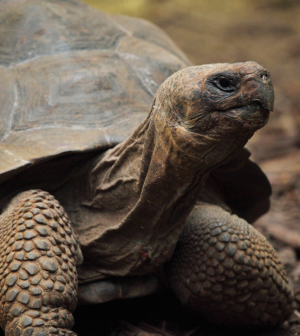- Do you subscribe to Dharma Dog Training’s Newsletter? You should.
- A Unique Campaign from The Humane Society of the United States
- Rabid bats in Omaha- Stay safe, prepared with these tips
- Springtime Activities in Omaha
- Mill Dog Monthly from Bailing Out Benji
- World Spay Day, Legislative Alert in Nebraska
- Attend the Nebraska Rescue Council’s monthly meeting this Saturday
- Five Hard-to-Ignore Reasons to Adopt!
- Paws in Pink to Benefit Breast Cancer Foundation
- VCA, Inc. Acquires MidWest Vet Specialists from Kansas State University
How to Care for a Pet Tortoise

Keeping a tortoise for a pet may not be up to everyone’s alley. But those who do own tortoises claim that these prehistoric-looking animals are adorable, calm companions. However, while it is true that tortoises can live very long, they are different from other pets. They require high maintenance and need proper care to survive.
There are different tortoise species one can keep at home. When deciding which one to buy, it is essential to find out if they need specific types of care. That’s because different species have different behavior patterns.
With that said, here are some everyday things you should know about caring for a pet tortoise.
The perfect terrarium
You cannot keep a tortoise in a standard-sized terrarium as it will outgrow the tank eventually. An adult tortoise needs an enclosure with at least a 50-gallon capacity so it can roam around freely in there. A screened lid is a good idea as tortoises tend to stand upright, taking the support of the glass. If the terrarium is not tall enough, the tortoise may try to get out, resulting in an unfortunate fall.
Climate and lighting
Different tortoise species may need varied climatic conditions to survive. For instance, Russian tortoises need drier, warmer conditions, with about 50% humidity. In contrast, Greek tortoises can stay in wetter, cooler conditions, with about 80% humidity.
However, they all love to soak up heat from the sun and tend to be most active during the day. Ideally, you should try keeping at least half the terrarium exposed to sunlight. This way, your tortoise can move to the shady side when he’s had enough sun. Alternatively, you can get a particular bulb that can replicate the sun’s ultraviolet rays and use it for about twelve hours a day.
Tank decor
Decorate the terrarium with calcium sand, soil, coconut fiber, or bark, depending on the type of species you own. This will make your tortoise comfortable and feel at home. You can also add sticks or plants into the enclosure. However, make sure the plants you use are edible and won’t give the tortoise indigestion or other gut issues.
Ensure to clean the tank at least once a week. You can also change the bedding once every month.
Food and health
Tortoises can safely eat cabbages, lettuce, carrots, dandelion leaves, spinach (not all the time, though), and apples. Check with your veterinarian if the particular species you own needs any additional food care.
Also, even healthy-looking tortoises can be sick sometimes. So, if you notice any of the below signs in your tortoise, schedule an appointment with the veterinarian immediately.
- Sudden weight loss
- Shell issues: discoloration, scaling, etc.
- Loss of appetite
- Swollen joints
- An increase in time spend inside the shell
- Discharge from the eyes, mouth, or nose
- Constantly runny droppings
Types of tortoises to keep
Although beautiful, many tortoises are categorised as endangered species. So, of course, you may not be able to keep just any species at home. But of those permitted to own as pets, popular ones include Greek Tortoise, Hermann’s Tortoise, Russian Tortoise, Pancake Tortoise, Egyptian Tortoise, and Gopher Tortoise, to name a few.
Remember to keep your tortoise safe and healthy, giving him the exact kind of care specific to his species.
——-x——-
Latest News
-
3 Tips for Pet Owners on Training Rescue Dogs
Owning a rescue dog can take some work compared to...
- Posted 2 weeks ago
- 0
-
Choosing the Right Pet for Your Lifestyle
Are you thinking about getting a pet but unsure what...
- Posted 4 weeks ago
- 0
-
How to Make Your Rescue Pet as Comfortable as Possible
Did you bring home a new pet from a shelter...
- Posted 2 months ago
- 0
-
How Having A Pet Can Change Your Life
Having a pet can open your heart in ways that...
- Posted 7 months ago
- 0
-
How To Improve The Life Of Your Senior Pet
Do you have an elderly fur baby and want to...
- Posted 7 months ago
- 0
-
Springtime Activities To Enjoy With Your Furry Friends
Are you preparing for warmer weather and want some ideas...
- Posted 8 months ago
- 0
-
Pros And Cons Of Microchipping Your Pets
Have you considered whether your pets should be microchipped and...
- Posted 9 months ago
- 0

















You must be logged in to post a comment Login